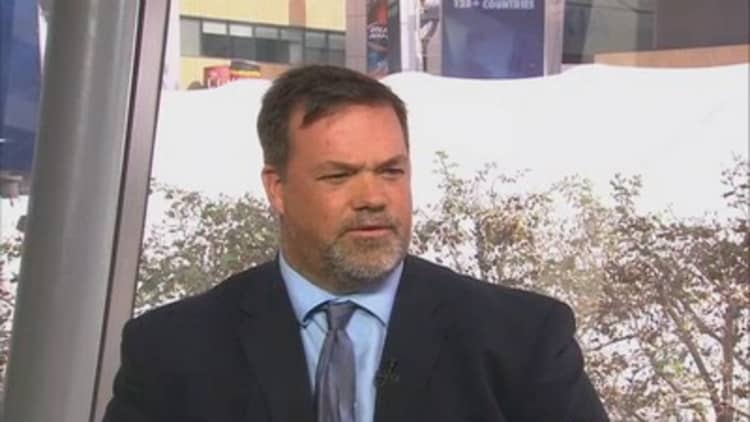
U.S. households are approaching the halfway mark when it comes to owning mutual funds—44 percent now do, according to the latest numbers from the Investment Company Institute. And the bulk of them have their employers to thank: The ICI's "2013 Investment Company Fact Book" study found that 72 percent of households owning mutual funds have dollars invested with a company's sponsored retirement plan.
Mutual funds have become the mainstay of retirement, and the growing number of funds to choose from has steadily picked up steam. In 1940 there were 68 mutual funds; today, just under 7,600. Although not all are available through employer-sponsored plans, the fact remains that there are a litany of options available to many employees, so figuring out the ones that steadily offer the best returns takes some homework.
That said, you might want to take a close look at what Joe Huber, CEO and chief investment officer of Huber Capital Management and member of the Young Presidents' Organization, has been doing in the space. Huber has been managing two No. 1–ranked mutual funds for more than five years—one in small-cap value (Huber Capital Small Cap Value Fund) and one large (Huber Capital Equity Income Fund).
(Read more: 2014 top trends in mutual fund investing)
In late March the firm received three Lipper industry awards, which recognize the strongest-performing funds, for the third consecutive year.
In an exclusive interview from this year's YPO Global Edge conference, Huber told CNBC's Tyler Mathisen that, for 80 years, there have been two main schools of thought when it comes to investing: fundamental and technical analyses. His firm's approach takes a different route by using an additional key factor—the psychology of the stock market.
Also known as behavioral finance, this psychology of the market first emerged as an area of study in the late 1960s and was thrust into the mainstream by the cognitive psychologists Daniel Kahneman and Amos Tversky. Their research focused on the ways in which individuals make decisions when faced with uncertain or risky situations. Since then, behavioral finance theories have become more elaborate.
In his book "Irrational Exuberance," Nobel Prize-winning economics professor Robert Shiller pointed out that the media, often unintentionally, amplifies growing market bubbles. This is because news cycles hone in on what is already grabbing the attention of individuals.
(Read more: ETF, mutual fund flows still up but iffy)
Huber offered a recent example of how behavioral finance works. Uranium prices are at multidecade lows, mainly due to the negative perception of nuclear power in the wake of Japan's Fukushima disaster in 2011. Huber explained that this perception does not correlate with the likely future of nuclear power and uranium prices, because "the fact of the matter is that China, South Korea and India haven't slowed down." He noted that even the Japanese government has recently expressed the desire to grow nuclear power in the future.
These types of trends emerge because of "decision flaws." According to Huber, all humans make these mistakes, and it happens because society tends to overweight the last data point they see—just like the assumption that nuclear power would grind to a halt following Fukushima.
—By Anthony Volastro, Segment Producer, CNBC. Follow him on Twitter @VolastroCNBC.




